A little over one hundred years ago, E. M. Forster wrote the short story The Machine Stops. It describes a future in which humankind has moved from the surface of the earth to live underground in small chambers, because air has become lethal above ground. Living in the chambers is quite comfortable; everything happens by pressing a button and “the Machine” takes care of everything. People exchange ideas through short video lectures, and everyone is continuously in connection with one another. It seems that humankind has finally conquered nature – by becoming dependent on “the Machine”. And, as one could guess, things start to go wrong.
Even though the expressions used in the short story seem amusingly obsolete, the day-to-day life it depicts may seem identifiable to many who have begun to work from home due to the restrictions. Staring at talking heads on a screen and ordering food by pushing a button became the norm for many during the spring. At the same time, the message of the short story concerning the role given to technology is still topical. On which terms do we want to adopt technology, what kind of power do we want to give it, and how dependent on it do we want to become? What if the “machine” stops?
Sitra’s Megatrends 2020 report describes how technology is becoming embedded in everything. Technology continues to develop rapidly and new applications are adopted quickly. At the same time, it influences operating methods, the structures of society and the daily lives of people. The adoption of technology can also increase inequality and weaken privacy, and therefore open and participatory discussion about the impacts of technology and its adoption is becoming increasingly important.
The coronavirus crisis has accelerated the adoption of technology and its integration into the lives of many. At the same time, the tensions relating to the developments, which we will review in this sixth article of the Impacts of the Coronavirus series, will be become more apparent. Different people use technology in different ways, and not everyone has equal opportunities for using different devices. When a technology gains ground, will it increase inequality? On the other hand, who gets to define what kinds of solutions are adopted and how? The adoption of technology changes technology in significant ways, which is why it is important to pay attention to who decides on its development: corporations, governments or people? Or perhaps all of them together?
Widespread use of technology vs inequality
The coronavirus crisis resulted in a digital advance in the use of remote connections, at least temporarily. It has been estimated that over a million Finns, or some 40 per cent of those employed, moved to working from home fully or almost fully due to the coronavirus crisis. It should also be noted that working from home is not possible for the majority of people. Families with children became familiar with remote connections when schools adopted remote teaching very quickly. Many families have in fact probably been seeking a balance between both children’s and parents’ virtual meetings, calm workspaces and the limits of network capacity.
The use of diverse meeting platforms increased significantly during the spring. It was not only the education and work of many that went online, but also their hobbies and leisure activities. There were, for example, remote dances and gym classes and virtual museum tours during the spring. At their best, remote connections can bring people closer; for example, user-friendly video calls have helped families keep in touch. Of course, watching a person on-screen is no substitute for a physical encounter.
The adoption of technology and its entering widespread use will also change behaviour. Already, separate behavioural rules and manners have emerged around remote connections. Keep the microphone muted and camera on. “PV” or “PVP” has come to mean asking to speak. Meetings are ended 10 minutes early so that the brain is given a moment’s respite in a whole day of meetings. Perhaps surprisingly, walking meetings have become more common – still via remote connections.
Not everything has been a digital bed of roses. “Can you hear me?” has become a cliché. On a screen, it is harder to interpret others’ facial expressions and gestures, and continuously staring at the screen with a headset on is exhausting. The lack of random encounters may increase feelings of loneliness. The monotony of remote working days can become boring and lead to work-from-home apathy.
Currently, remote connections mainly remind us of a group of talking heads on the screen. In the long run, the forms of virtual meetings can become diversified. Diverse virtual worlds have already increased in popularity. A meeting can also be arranged in online multiplayer games, such as in the virtual world of an action adventure game taking place in the Wild West. The new forms of virtual reality are not limited to meetings alone. Because of travel restrictions, “travel from home” has become more common. Digital Museum opened in the spring, offering paid tours, and virtual travellers are coming “to Finland” from abroad as well.
Video meetings and travel from home draw attention to the overall experience of the digital environment. Instead of simply trying to replace a physical meeting with video or condensing the highlights of a trip into a few videos, we could think about all of the things that could be possible now that were not before. As a result, virtual and augmented reality technologies and services can also become more commonplace.
In addition to remote connections, the use of other digital services has increased. E-shopping for groceries and the demand for home delivery multiplied. Online shopping seems to be becoming increasingly common. Avoiding touching payment terminals has made contactless and mobile payments increasingly appealing. Avoiding queues and crowds can accelerate new operating models in shops as well. For example, the popularity of the “collect and scan” service increased, and a new cashier-less shop was opened in Helsinki.
Self-driving vehicles have turned out to be useful during the pandemic. They have been adopted in China in particular, where they have been used for transporting goods and people and disinfecting places. In addition to vehicles, robot dogs, among other things, have been seen on the streets, monitoring safe distances in Singapore or offering hand sanitiser in Thailand.
With technology becoming more commonplace, we should also keep an eye on how it is deployed and for whom. Technology can increase or decrease inequality, depending on who has access to it, who knows how to use it and who gets to influence it. The coronavirus crisis has accelerated digital solutions in particular, while making the “digital gap” even more clearly visible. What if you do not own a laptop, smartphone or a good internet connection or are not proficient in their use? What if your hands shake or the use of smart devices is difficult for some other reason? Will you remain an outsider, or will there be adequate support available?
On the other hand, another digital gap might also appear in the long term concerning those who may or may not have the opportunity to opt out of digital solutions. Even before the crisis and all the restrictions, there were signs that being able to be “off-grid” and away from digital devices was considered to be a new luxury. Now that people have become familiar with online teaching and diverse remote services, there is the risk that they are adopted to save costs without paying sufficient attention to functionality or quality. A situation may arise where those that can afford it will pay for personal service, while others will have to make do with digital services.
The question of increasing inequality also applies to smart devices that monitor people’s vital signs. It was reported in the spring that the Oura smart ring had helped its users notice possible coronavirus infections. In addition, smart devices are increasingly used to monitor well-being at work. At best, smart devices can support proactive healthcare, but not everyone can afford them or is willing to use them.
The data collected by smart devices and other services is also associated with essential questions. About whom is it accumulated, and who has access to it? In optimistic visions, the collection of data takes place on the terms of people and the services based on analysing it are available to everyone. Sitra’s IHAN project also aims at this. The pessimistic, even threatening, scenarios, on the other hand, involve large corporate networks centralising data management and a radical weakening of privacy. In addition, we should consider how reliable the collected data is and how well it can be interpreted. Many sensors found in smartphones and other devices only offer approximate data, but we might treat their readings as facts carved in stone.
Because the world of digital services appears to be taking shape at a fast pace, we should think about what kind of technology we want to adopt more extensively after the coronavirus situation is over. Which old habits or practices could we give up, for example, if we are not as tied to place and time as a result of the new services? And what kinds of technological solutions do we not want to adopt?
Corporations vs governments deciding on technology
Technology has played an important role in the global struggle against the coronavirus. Across the world, however, the approach to the deployment of technological solutions has had very different starting points. Governments, corporations, communities and even individuals are eager to develop diverse location and identification solutions associated with the coronavirus. These planned methods include the measurement of body temperature through facial recognition or thermal imaging, diagnosing the coronavirus from a cough through speech recognition, position monitoring or sounding alarms when crossing quarantine borders.
When new digital solutions are created at an accelerating rate and technology facilitates new kinds of services, it is important to bear legislative and ethical questions in mind. Across the world, there have been very diverse attitudes towards solutions relating to preventing the pandemic, collecting very personal data about people’s movements and health – for example, location can be monitored every moment.
In Asia, the starting point for eradicating the pandemic has been very government-oriented and controlling, as has the data policy in general. In Europe, the starting point is more in voluntariness, taking privacy also into account and not aiming to develop solutions that collect “unnecessary” data. This translates into the use of sufficiently reliable technologies to ensure the transparency and privacy of data sharing. Among other things, this involves ensuring that the location of data of an encounter is not stored in the application and that the user has, when installing the application, given consent to their data being shared with the specified parties.
The exceptional situation can alter our behaviour as individuals, companies and a society. This provides businesses with an opportunity to recover from the crisis by making use of technology and creating new innovations that respond to the changing demand of society and people. Legislators play a key role in this new world. Governments rarely make decisions on technologies, but legislation can either prevent or facilitate innovation.
Legislation is, however, slow, so how could a government support companies’ innovation activities when no one knows about future technologies for certain, let alone the needs of the post-pandemic society? While it is necessary to regulate the use of tracking applications and consider the ethical questions involved, it is not fully known what kinds of services can or need to be created. What if the need concerns preparing legislation on the use of data? Currently, individuals cannot control the data collected about themselves, and often we allow applications or sites to collect a lot of data about us without a second thought. According to a digital footprint survey carried out by Sitra, all six of the test subjects were surprised by the quantity of data collected about them.
In particular, technology giants such as Facebook, Google, Apple and Amazon have benefited from the quantity of data. The same companies have also benefited from the exceptional situation, with people using remote connections and cloud services more and generally spending more time online. Amazon has actually suggested that people buy fewer goods to cope with the increased demand. Large companies have also reacted to the exceptional situation by developing their remote services faster than planned and offering technological resources for tracking infection chains. Suspicion towards the technology provided by these companies and its ethical use to resolve the crisis has increased. Fear of possible misuse may even lead to useful technological solutions not being adopted.
The technology giants are also better positioned to endure economically unstable times than many smaller companies (read the “Will the coronavirus accelerate economic reform?” article for more details). Because we use the services they provide on a daily basis, their responsibility and impact on society have become significant. In terms of market capitalisation, they have joined the ranks of the world’s biggest companies. Now, it is essential to consider who will decide on the direction of technological development and terms of adopting services, what kind of regulation will be necessary to balance the situation and how the benefit now accumulated by a few companies could be distributed to more parties.
Companies that have been able to take their operations online and quickly offer new services suited to the restrictions fared the best during the spring. Technology has been a facilitator for many companies, but flexibility in adapting business models will also guarantee future success. In future, the collection and, in particular, the use of data will become increasingly important. Data is a very different form of raw material in that it is not consumed in use, but actually continuously increases. The market research firm IDC estimates that the amount of data will almost quadruple over the next five years. While much of it will be created by the Internet of Things industry, a lot will be data more closely connected to the day-to-day lives and activities of people.
Data, digital services and the use of new technology will not just be essential to businesses, but to local authorities as well. Using the means provided by digitisation can increase people’s participation and improve the flow of information. For example, robot calls using the voice of a local authority manager can be used to get in touch with a municipality’s residents within a few seconds. Diverse digital platforms also provide channels for dialogue and joint decision-making in exceptional situations. The currently available Kuntalaisaloite.fi online service for municipal initiatives is only the beginning from this point of view.
Technological solutions can facilitate a more functional society for us, increase well-being and make the lives of individuals easier. If we can foresee diseases or social marginalisation with technology, we can achieve significant savings for society and a better life for people. This can happen by combining data from different public and private-sector sources. Government should, however, first allow the consolidation of data from social services and the healthcare sector, and in conjunction with data from the private sector . Sitra is co-ordinating the European Health Data Spaces project that defines future health data collection and its use Europe-wise.
Finland is known for its engineering expertise and as a technological forerunner. With technology becoming embedded in everything, it provides companies with an opportunity to innovate to create completely new products and services – a new kind of society. The coronavirus crisis made individuals, businesses and the public sector pull together. If government gives companies the opportunity to create something new too freely, the rights of individuals can be at risk. If government restricts the use of technology or data too strongly, many innovative products and services will not be created and other countries will overtake Finland, and we will not cope with the looming post-crisis recession.
It is now essential to consider who makes the decisions on making use of the opportunities provided by technology: individuals, businesses or government? Or all of them together? We surely will not long for the machine-controlled world described by E. M. Forster after isolation, but instead will appreciate human contact even more. When used correctly and thought out from the beginning, technology provides us with an opportunity to create a more equal world with more well-being at all levels of society.
| These give rise to hope: |
| Expansion of corporate responsibility – During the coronavirus crisis, we saw that many companies were willing to offer their help and be part of the solution to the crisis. Many companies offered their help and expertise in the development of diverse technological solutions for free, and competitors also shared information openly. |
| Increasing communality – Technology also made communication possible during the restrictions, and supported the emergence of communality. For example, neighbourly help was organised via the Nappi Naapuri platform for those who needed it, and social events through remote connections became common. |
| Competence and resources for adopting technology – The exceptional situation showed that, generally speaking, the resources and competence for adopting technology when needed are good in Finland. During the spring, competence and experience accumulated, which may facilitate new kinds of services. |
| New services – The restrictions made companies and communities think about new kinds of services and business models. Hopefully, the experience gained will also benefit the appropriate adoption of technology in future. |
| It is important to discuss these right now: |
| About the use of data – An increasing amount of data is accumulated, and collected, about us. The coronavirus crisis has accelerated this trend. The increasing amount of data provides opportunities for creating new business models, but it also gives rise to questions about the ethicality of data use and privacy. That is why it is important to discuss data management and the rights of an individual regarding data now. |
| About the terms of adopting technology – The technological solutions adopted now can have long-term impacts on companies, individuals and society. It is essential to now discuss the terms on which we want to adopt technology and what kind of a role we want to give it. |
| About the development views of technology – The adoption of technology changes technology in significant ways, which is why it is important to pay attention to who decides on its development: corporations, governments or people? Or perhaps all of them together? |
| About inequality – Technology can increase or decrease inequality, depending on how extensively the new services become available and what prerequisites and expertise people have to use it. With new technological solutions becoming more commonplace, we should assess how it is deployed and for whom. |
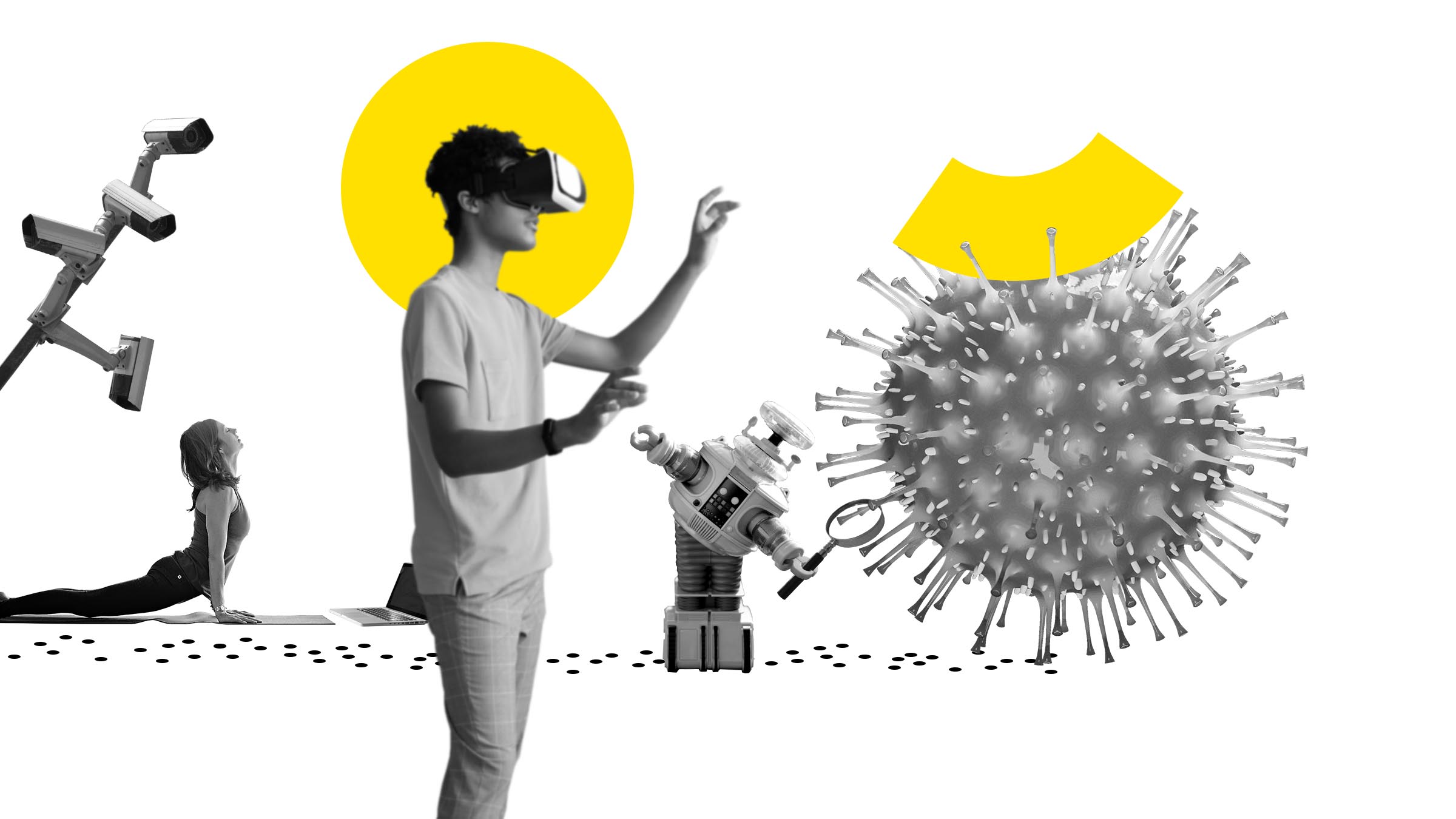



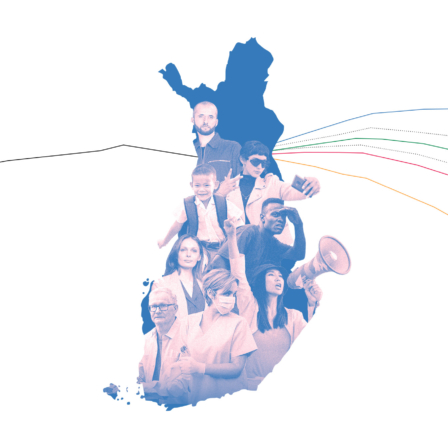

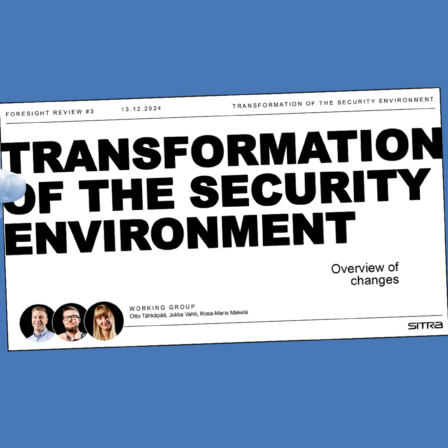
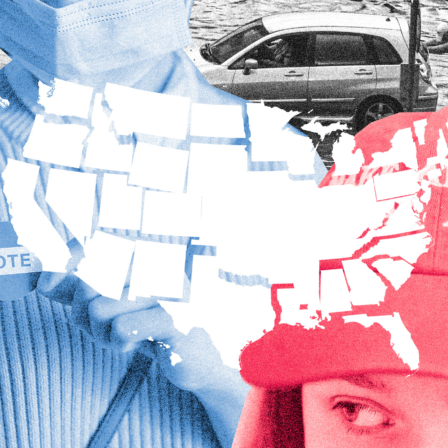
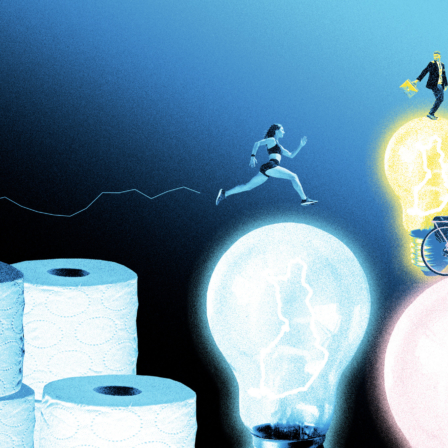






Recommended
Have some more.